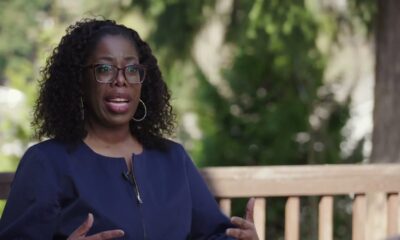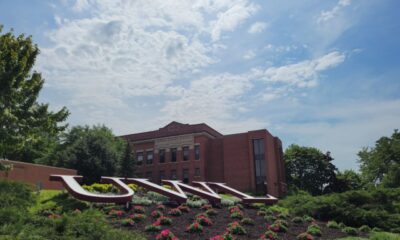National
Washington University reports impact of environmental racism

ST. LOUIS (AP) — African American residents in St. Louis are exposed to far greater environmental risks than whites, contributing to stark disparities in health, wealth and quality of life, a new report from Washington University has found.
Released earlier this month, the report titled “Environmental Racism in St. Louis” piles together data and personal stories to illustrate how city residents contend with eight separate issues, stretching from lead exposure to asthma and limited access to healthy food.
Many of these challenges — and how their impacts skew along racial lines — are well documented, and have been examined individually by experts, policymakers or advocates. But the 28-page report discusses how many of them are interrelated and compound one another — something it says leaders need to take into account, the St. Louis Post-Dispatch reported .
“The report does a good job, in my opinion, of showing how these things come together, and how policy and divestment over time creates these outcomes,” said Kayla Reed, director of Action St. Louis, an activist group focused on racial justice. “Our goal is to get it in front of policymakers and community members to help spark dialogue around next steps.”
Those conversations figure to revolve around the hard truths described by the authors.
“It should come as no surprise that black St. Louisans are disproportionately harmed by lead poisoning, asthma, mold, and high energy costs — all of which are associated with factors such as substandard housing conditions and air pollution — due to living near industrial facilities, highways and building demolitions,” the report states. “In addition, the City’s focus on enhancing majority-white areas has left majority-black areas without adequate access to public transit or healthy food, and with high concentrations of vacant properties and illegal trash dumping.”
The report was generated by the Interdisciplinary Environmental Clinic at Washington U.’s law school — a pro bono legal practice that tracks matters tied to the environment and public health. It was done on behalf of four nonprofit organizations active in the city, with the stated goal to help those groups educate the community about environmental injustices facing minority and low-income residents, and to advocate for systemic changes to address them “and enhance public health.”
The findings show how unequal things are currently.
For instance, black children in St. Louis are about 10 times more likely to visit an emergency room for asthma than white kids, and 2.4 times more likely to have lead found in their blood. At the same time, mold complaints are most prevalent in the city’s majority-black areas, while black and low-income households face energy burdens that see them spend a much greater percentage of their income on utilities than typical city residents — often more than double the median amount. And black residents are nearly twice as likely as white ones not to have access to healthy food, thanks to an absence of nearby supermarkets — a phenomenon some have coined as ”‘food apartheid’ to reflect the role of systemic racism in engineering this result,” according to the report.
Highlighting the linkages between many of the issues is one way the new report distinguishes itself from previous papers or studies, said various people behind it.
“All of these things are not separate outcomes,” said Reed, who added that continued policies and strategies “have created these disparities that live along class lines and racial lines.”
The report’s broad, multi-issue outlook also more accurately reflects the daily experiences of thousands of city residents.
“People don’t live their lives only in one issue,” said Amanda Colon-Smith, the executive director of Dutchtown South Community Corp., a nonprofit focused on the vitality of certain south St. Louis neighborhoods. “People experience their lives with multiple issues.”
“Black people or people of color aren’t just dealing with one of them, but are dealing with all of them simultaneously,” added Ken Miller, an environmental scientist and lecturer in law for Washington U.
And while minority communities are disproportionately affected, the challenges aren’t confined to one part of the city, despite the legacy of segregated housing patterns.
“The truth is, it impacts a lot of people north and south of Delmar (Boulevard),” Reed said. “The sad part is, when it becomes a north-and-south conversation, it doesn’t get a lot of traction.”
Now that the report has been released, the hope is for it to guide conversations that generate blueprints for change or possible solutions.
“The intent is not to have it be another report or set of data points that sit on a shelf somewhere,” said Reed. “It’s connecting these conversations together with the hope that we actually move forward with action.”
Initial steps are set to take place next month, when information from the report will be shared at events such as the Green the Church Summit, an “environmental and sustainability summit for the Black Church.”
The report’s authors acknowledge it won’t be easy to address such long-standing, complex and systemic issues. But some see the interconnectedness of varying problems outlined in the report as a source of opportunity — not just complication.
“We’re able to bring those all together for combined and greater impact . . I think that’s going to be a strength,” said Colon-Smith. “When we start making improvements in one area, they will have benefits to other areas.”





